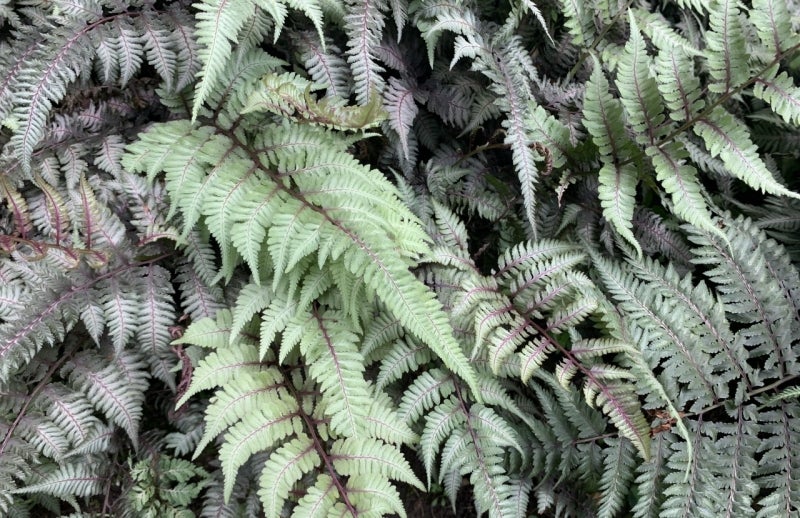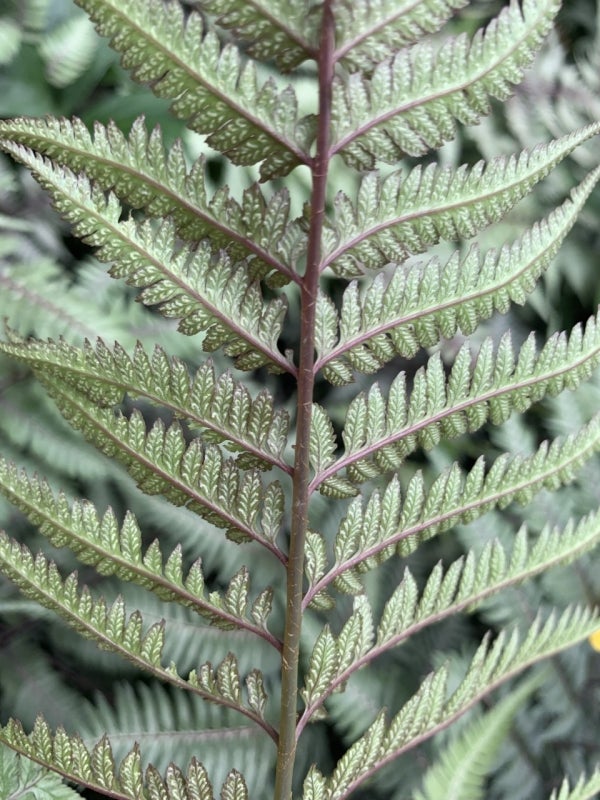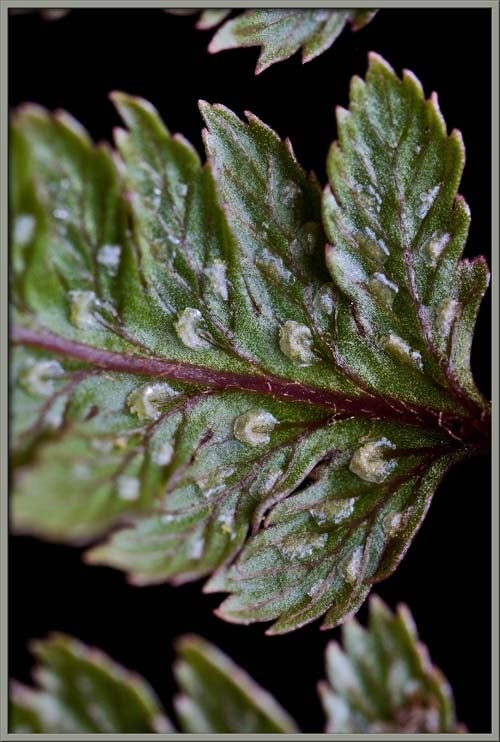Blog



In 2004, Athyrium niponicum var. pictum (Japanese painted fern) received the Perennial Plant of the Year award for being one of the most colorful and resilient ferns for the garden. Its feathery sage, silver, and burgundy foliage can brighten a shady area from spring through November, when it dies back for the winter—and it’s deer resistant!
The genus name Athyrium derives from the Greek "athyros," meaning doorless, and refers to the hinged indusia, a covering that protects the sorus, a collection of spore cases which are slow to open (see bottom right photo). Niponicum means of or from Japan, although this species is also native to North China, Korea, and Taiwan. Pictum means painted or highly colored, and in contrast to Athyrium niponicum, which is an all-green fern, the variety pictum has burgundy midribs and veins accenting the silvery green leaflets. Cultivars such as 'Burgundy Lace’ and ‘Pewter Lace' show enhanced coloration. There are also some hybrids between Japanese painted fern and the native Athyrium filix-femina (lady fern). One such hybrid is ‘Branford Beauty,' combining the colorful curved fronds of the Japanese painted fern with the textured leaves of the lady fern rather than the spreading rhizomatous habit of the Japanese painted fern, the hybrid inherited the erect habit of the lady fern.
Scientists at the New York Botanical Garden are wondering if Athyrium niponicum var. pictum may be the first exotic fern to naturalize in the New York City area, as the spores from this plant, endemic to East Asia, spread via wind to moist, fertile areas away from where they were planted. These scientists are asking us to photograph examples of this fern growing in places where it does not seem to have been deliberately planted by humans, and to send photos to iNaturalist, a useful and free app for your phone, so that they can be studied for evidence of naturalization. With iNaturalist you can take photos of plants, animals, or fungi and get immediate computer-generated ID suggestions. Additionally, you have the option to contribute your observation, and over the following weeks the iNaturalist scientific community will offer opinions as to the correct species name. If concordance is reached, your observation will be considered “Research Grade”—what a satisfying way to advance worldwide mapping of the natural world!


Come enjoy the Japanese painted ferns at Morris Arboretum; there are large patches growing in the shade by the main parking lot, near the Springhouse complex, and in the Dorrance H. Hamilton Fernery. Not all fern species have sori on the undersides of their fronds, but August is a good month to look at the leaflets of those that do; the position, size, and shape of sori is important information for fern ID (see left photo). And, while you are exploring, why not put on your citizen scientist hat and send an observation to iNaturalist?
P.S. Want to try growing ferns from spores? Here’s a tip sheet with easy directions, written by William Cullina, the F. Otto Haas Executive Director of Morris Arboretum.
Katherine has her Certificate in Botany from the New York Botanical Garden and is a freelance writer. You can contact her with comments or requests for photos at botanicaltours.weebly.com